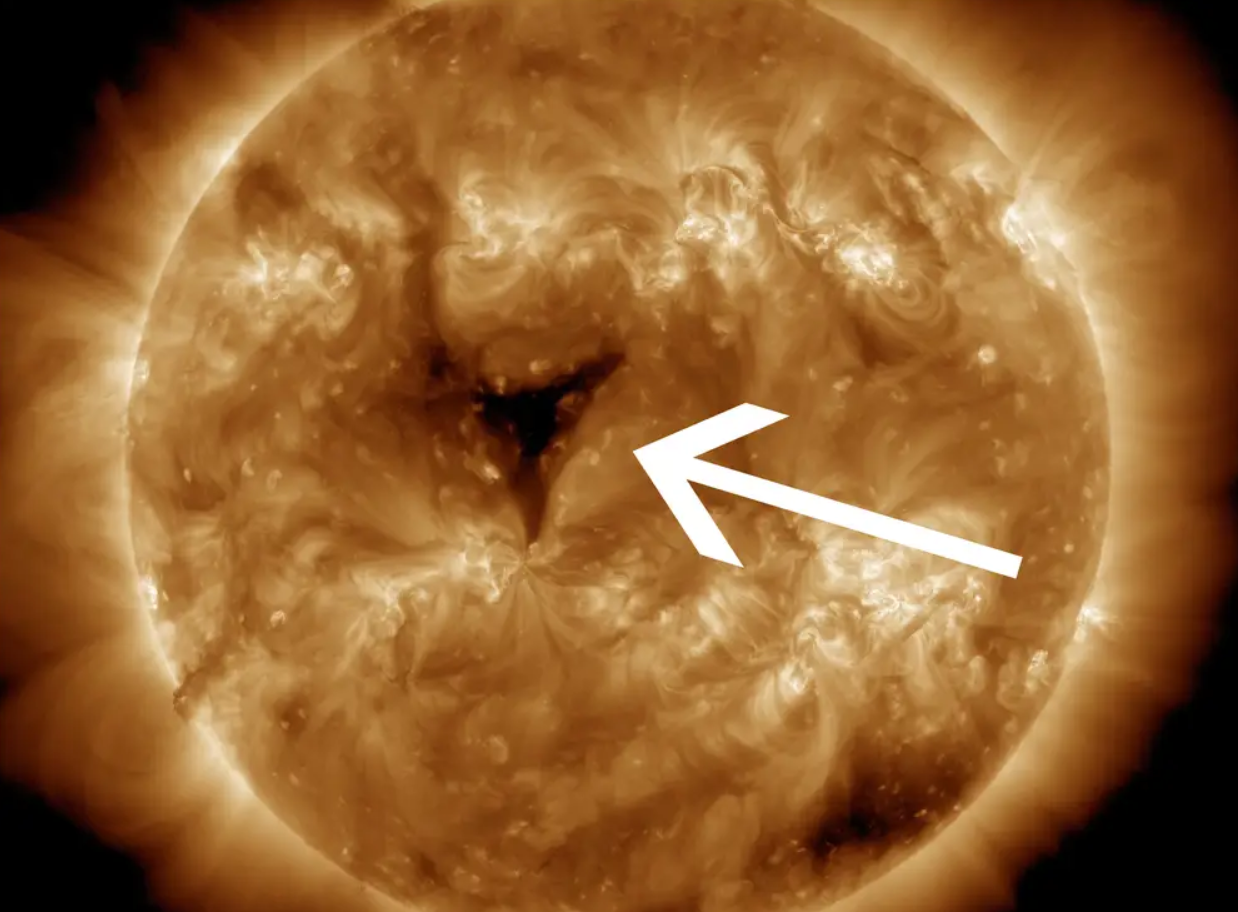Recently, a super-powerful solar flare caused a strong geomagnetic storm, the consequences of which were seen even in the southern regions of the United States in the form of bright auroras. These were the consequences of the formation of large spots. On the day, the giant coronal “hole” formed on the Sun, which turned out to be large enough in area to easily accommodate 20 Earth-sized planets. Such events on our star indicate the approach to the peak activity of the Sun, which occurs during its 11-year cycle.

Although such coronal holes are not uncommon, they usually appear near the poles of the Sun. However, this last “hole” is special because it has appeared at the equator, which indicates that the next stunning auroras are waiting for us on Earth. This is because these violent events cause the particles of the Sun to fly through the Solar System and interact with the earth’s atmosphere.
“I would expect some fast wind from that coronal hole to come to Earth around March 31 and April 2,” Daniel Verscharen, an associate professor of space and climate physics at University College London, told Insider.
Getting closer to the peak of solar activity
The sun is actually a large ball of plasma. This plasma is knocked down from inside the Sun to its surface, and at the same time creates decreasing and swelling magnetic fields. According to NASA, when these magnetic fields are torn apart and create powerful ejections directly into space, a coronal hole appears. This makes it much easier for solar winds — pieces of solar plasma — to fly into space at high speed. These areas tend to be colder and less dense than the surrounding hot, turbulent plasma, which explains why they look like dark spots on the surface.
Solar winds can inflate at a speed of more than 800 kilometers per second. This is about 2.5 million km/h. If these magnetic lines are directed at the Earth, this wind will crash into our atmosphere, creating the unique atmospheric phenomena of the aurora.
As these winds interact with our charged atmosphere, they can make the auroras brighter. When the bright aurora borealis, seen in the southern states of the United States, lit up the sky last week, it was not only because of the coronal hole. This effect appeared due to a combination of circumstances: several coronal mass ejections occurred at about the same time when the hole was facing the Earth, creating a huge geomagnetic storm that hit the magnetic field hard.
But experts say that in the case of this huge coronal hole, it is very unlikely that this will happen again. This may upset fans of the aurora borealis, but it is good news for the protection of the planet, as strong geomagnetic storms can harm satellites, infrastructure and radio signals.
Follow us on Twitter to get the most interesting space news in time
https://twitter.com/ust_magazine

